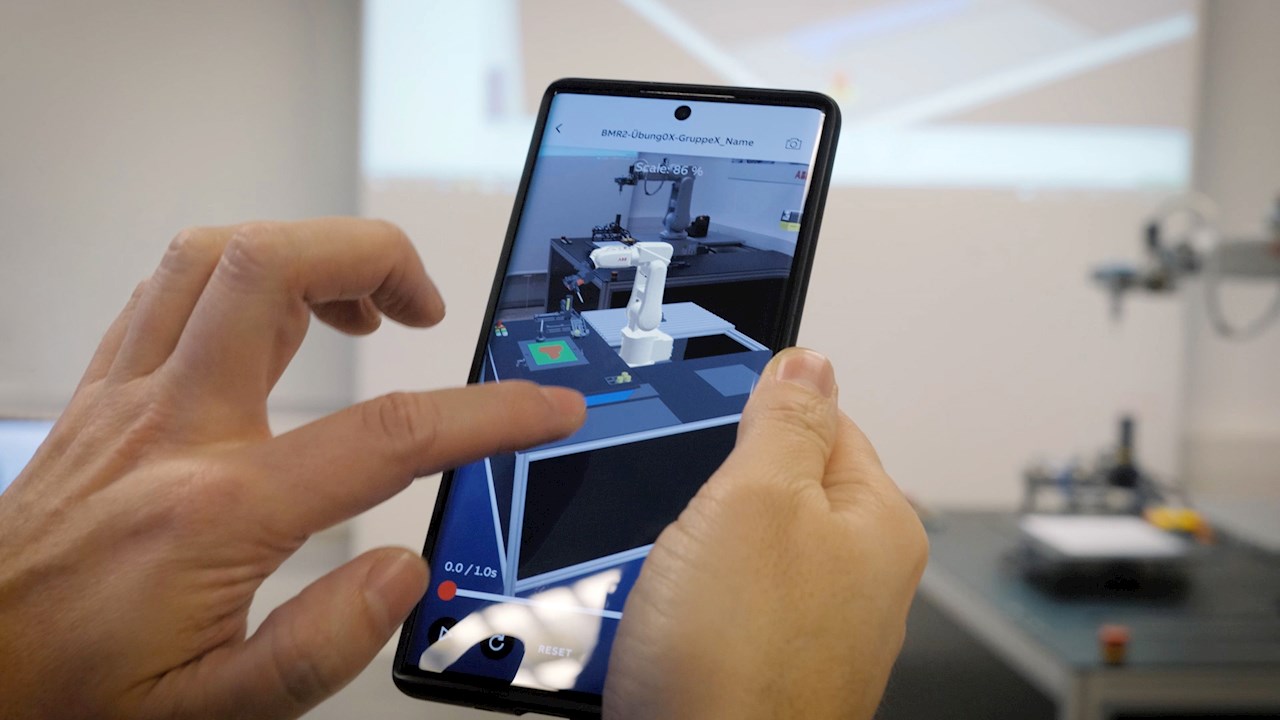Home>Latest News>Technology Trends>Augmented Reality Programming


Technology Trends
Augmented Reality Programming
Modified: September 5, 2024
Stay ahead of the curve with the latest technology trends in augmented reality programming. Explore the future of AR development and stay competitive in the tech industry.
(Many of the links in this article redirect to a specific reviewed product. Your purchase of these products through affiliate links helps to generate commission for Techsplurge.com, at no extra cost. Learn more)
Table of Contents
History of Augmented Reality
Augmented Reality has roots in the 1960s when Ivan Sutherland created the first head-mounted display (HMD) capable of superimposing virtual objects onto the real world. Significant attention came in the 1990s. Tom Caudell coined the term "Augmented Reality" in 1990, and the US military developed the first AR prototype for training simulations during that decade.
In the early 2000s, AR transitioned from military to civilian uses. The Nintendo DS, released in 2004, featured a built-in camera and touchscreen, marking a milestone in consumer-grade AR devices. Pokémon Go's success in 2016 further popularized AR, showcasing its potential for entertainment and social interaction.
Key Technologies in Augmented Reality
Several key technologies are essential for creating effective AR experiences:
Computer Vision
This technology allows AR systems to interpret and understand the real world by processing visual data from cameras. Algorithms detect objects, track movements, and recognize patterns, enabling accurate placement of virtual objects.
Markerless Tracking
Unlike traditional AR systems requiring markers or QR codes, markerless tracking uses machine learning algorithms to detect and track features in the real world without visual aids.
3D Modeling and Rendering
Creating detailed 3D models of virtual objects is crucial for realistic AR experiences. Advanced rendering techniques ensure these models are rendered in real-time, providing smooth and seamless interactions.
Machine Learning
Machine learning algorithms improve the accuracy of AR systems. They learn from user interactions and adapt to different environments, making AR experiences more personalized and efficient.
Cloud Computing
Cloud computing provides the necessary computational resources for complex tasks such as data processing and rendering. This allows AR applications to run smoothly on various devices, from smartphones to smart glasses.
Practical Applications of Augmented Reality
AR has a wide range of practical applications across various industries:
Education
AR enhances educational experiences by providing interactive 3D models that help students visualize complex concepts. Medical students can practice surgeries on virtual patients, while history students explore historical sites virtually.
Retail
Retailers use AR to provide customers with detailed product information and demonstrations. Customers can see how furniture would look in their home before making a purchase.
Healthcare
In healthcare, AR is used for patient care and training. Surgeons visualize internal organs during surgeries, while medical students practice procedures on virtual patients.
Manufacturing
AR improves efficiency and reduces errors in manufacturing. Workers receive real-time instructions and guidance during assembly processes.
Gaming
The entertainment industry has seen significant growth with AR gaming. Games like Pokémon Go show that AR can be fun and engaging, encouraging users to explore their surroundings in new ways.
Tools and Techniques for AR Development
Several tools and techniques are essential for developing effective AR experiences:
ARKit and ARCore
These popular frameworks, developed by Apple and Google respectively, provide developers with the necessary tools to create AR experiences on iOS and Android devices.
Unity and Unreal Engine
These game engines are widely used for developing AR applications. They offer advanced features such as 3D modeling, rendering, and physics simulations crucial for creating realistic AR experiences.
Three.js
This JavaScript library is used for creating 3D graphics in the browser. It abstracts away the complexities of WebGL, making it easier to build complex AR scenes.
Markerless Tracking Libraries
Libraries like ARKit's Scene Understanding and Google's ML Kit provide developers with pre-trained models that detect and track features in the real world without markers.
Cloud Services
Cloud services like AWS Sumerian and Google Cloud Vision provide developers with the necessary infrastructure to build and deploy AR applications. These services offer features such as real-time rendering and data processing essential for smooth AR experiences.
Case Studies and Examples
Several case studies demonstrate the practical applications of AR in various industries:
IKEA Place
IKEA’s Place app uses AR to allow customers to see how furniture would look in their home before making a purchase. This app has been highly successful in reducing returns and improving customer satisfaction.
Amazon Sumerian
Amazon’s Sumerian platform allows developers to build AR experiences using a visual interface. It provides pre-built templates and a drag-and-drop editor, making it easier for developers to create AR applications without extensive coding knowledge.
Microsoft HoloLens
The HoloLens headset is a powerful tool for enterprise applications. It allows workers to receive real-time instructions and guidance during assembly processes, improving efficiency and reducing errors.
Google’s ARCore
Google’s ARCore framework provides developers with the necessary tools to create AR experiences on Android devices. It includes features such as plane detection and point cloud rendering essential for accurate tracking and rendering.
Challenges and Future Prospects
While AR has made significant strides in recent years, several challenges need addressing:
Hardware Limitations
Current AR devices often struggle with processing power and battery life, limiting the complexity of AR experiences that can be achieved.
User Adoption
Despite the popularity of Pokémon Go, AR adoption remains relatively low compared to other technologies. High costs of AR devices and the need for a stable internet connection contribute to this issue.
Data Privacy
As AR becomes more prevalent, concerns about data privacy grow. Developers must ensure user data is handled securely and ethically.
Content Creation
Creating high-quality AR content is time-consuming and requires specialized skills. This can be a barrier to entry for developers new to AR.
Despite these challenges, the future of AR looks promising. Advancements in hardware and software technologies will continue to improve the quality and accessibility of AR experiences. As more developers and researchers contribute to the field, innovative applications across various industries can be expected.

